Kayakers paddle in Death Valley lake: 'Extremely uncommon' opportunity could dry up soon
The famously bone-dry salt flats at the bottom of Death Valley National Park in California aren't the first spot where most experienced kayakers would expect to paddle out.
Most of the time, water evaporates far faster than it can fill the Badwater Basin, which, at 282 feet below sea level, is one of the hottest, driest and lowest-elevation places in North America. But in the aftermath of record torrential rains and flooding, water has transformed the arid landscape into a thriving lake.
And park-goers are finally taking advantage of the rare occurrence.
The park recently re-opened to guests after road closures and flash flooding damage prevented visitors from reaching the basin in the aftermath of Hurricane Hilary. Since then, adventurers have flocked to witness the lake formation for themselves and wade out into its waters.
Haven't been yet? You may want to get a move on: Park rangers warn that water levels are expected to drop in a matter of weeks. Here's what to know:
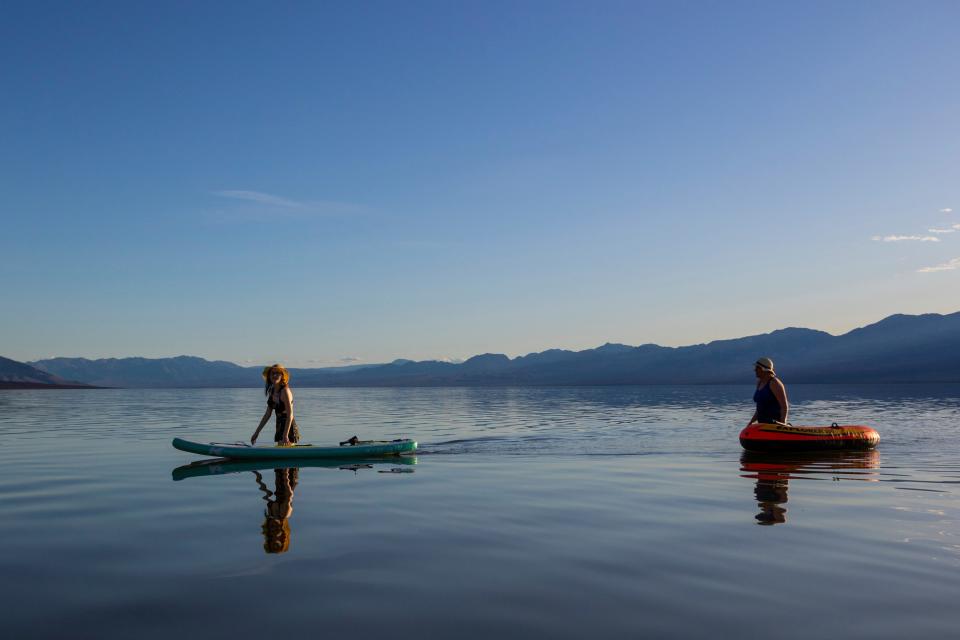
Why did the Death Valley lake form?
In the past six months, a deluge of storms bringing record amounts of rain led to the lake's formation at Badwater Basin, which runs along part of central California’s border with Nevada.
Amid torrential downpours, Death Valley National Park's valley floor has received a record 4.9 inches in the past six months, far surpassing the average annual rainfall of about 2 inches per year, according to park officials.
Satellite images released by NASA show how the lake formed in August in the aftermath of Hurricane Hilary. Though it gradually shrank, it persisted throughout the fall and winter before it was filled back up by another strong Californian storm earlier this month, known as an atmospheric river.
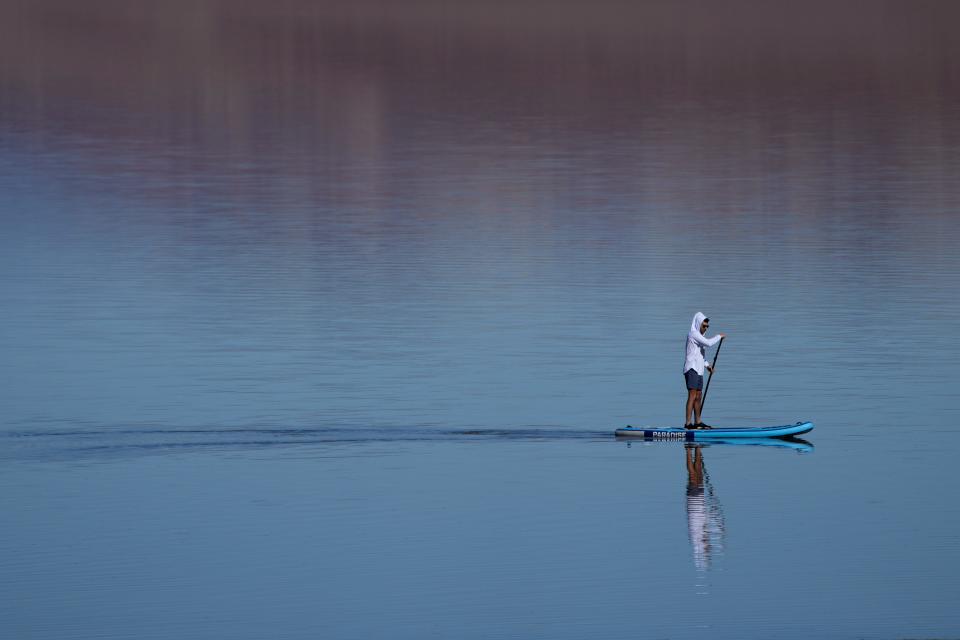
NASA's series of three images compares the desert basin in July before the flooding with its more-waterlogged state following both major storms in August and then in February.
Because the Badwater Basin is the lowest point in North America, it goes without saying that it will collect water. But Park Ranger Nichole Andler told the Associated Press that it typically evaporates faster than it flows, making the lake formation especially rare.
“To have as much water as we have now – and for it to be as deep and lasting as long as it has – this is extremely uncommon,” Andler said. “If it’s not once-in-a-lifetime, it’s nearly.”
What are visitors doing at the Badwater Basin lake?
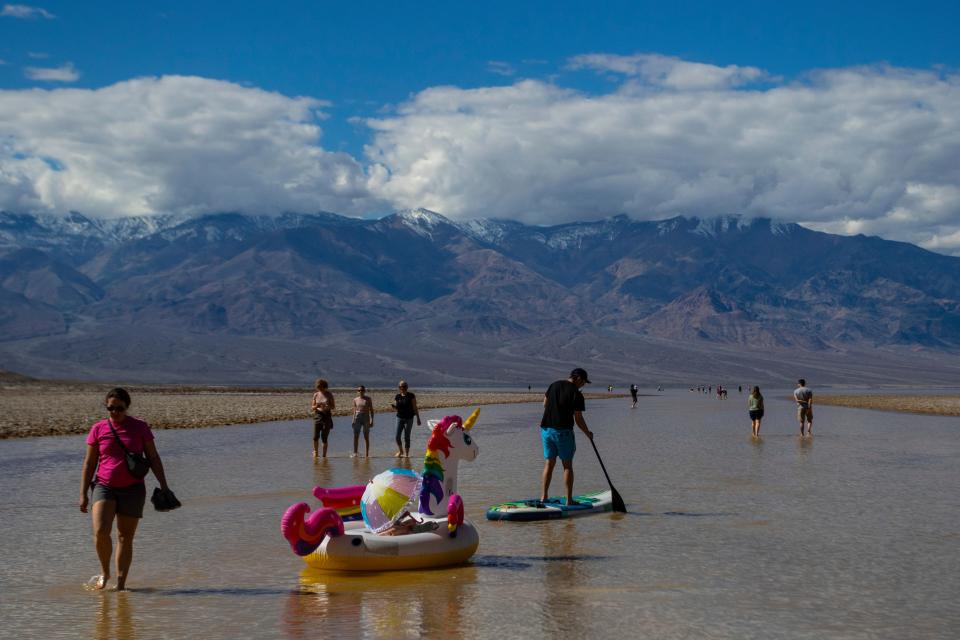
Badwater Basin was once the site of the large ancient inland Lake Manly, which evaporated tens of thousands of years ago, leaving behind concentrated salt deposits. Stretching for 200 miles, the salt flats have since become a popular spot for tourists drawn also by the scenic surrounding towering mountains surrounding them.
The presence of water, of course, has only served to draw in more visitors.
Photos taken Thursday by the Associated Press show hundreds of visitors wading through the waters, which also remained up to a foot deep in parts, enough for kayakers and other boaters to paddle through them.
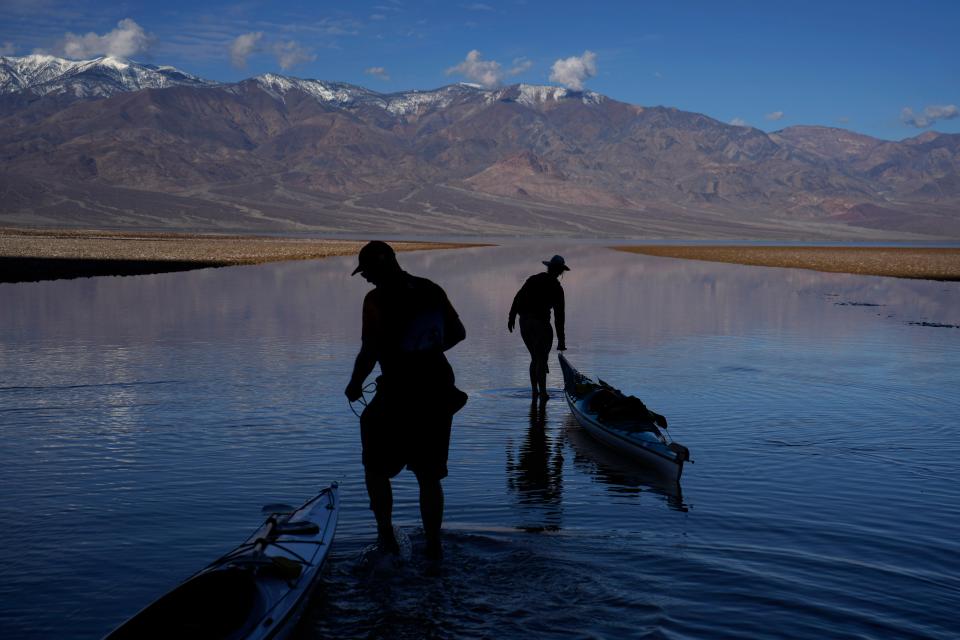
It hadn't been for 20 years that visitor Bob Gang was aware that the lake had filled to the point that boaters could go out on it, and he didn't intend to miss out again, the AP reported.
“It’s a lot of fun,” Gang, who gave a girl a ride on his kayak, told the outlet. “It’s good to see the little kids out here enjoying this and seeing something totally unique.”
But it won't last forever.
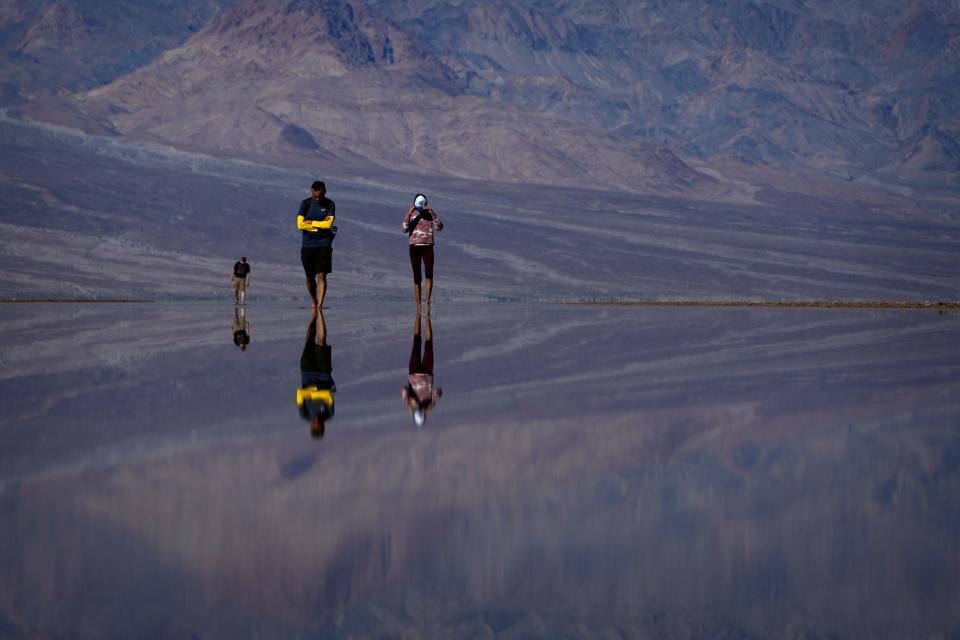
How long is the lake expected to last?
The lake remains about six miles long and three miles wide, but water levels are expected to drop in only a matter of weeks. Park officials speculated that the lake, which is shrinking every day, could last until late March or April – if we're lucky.
Kayakers might not have as much time to paddle out, but other visitors should be able to see the stunning reflections of the surrounding peaks in its calm waters for a little longer.
"Then it’ll be a muddy, wet mess, and then it’ll dry out into those gorgeous white salt flats," Andler told the Associated Press.
Contributing: The Associates Press
Eric Lagatta covers breaking and trending news for USA TODAY. Reach him at elagatta@gannett.com
This article originally appeared on USA TODAY: Kayaking at Death Valley lake draws visitors: Could water dry up soon?


